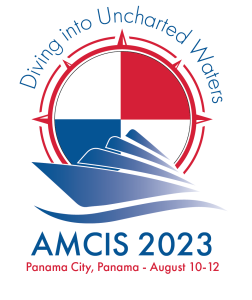Assessing Process Mining Use Cases: A Taxonomy of Antecedents and Value Potentials of Process Mining
Loading...
Paper Type
Complete
Description
Process mining (PM) has gained traction as a Big Data Analytics technique to discover, monitor, and improve business processes based on event data that are available in organizations' information systems. However, despite high expectations and widespread use in practice, organizations still struggle to implement and realize value from PM. In particular, organizations, first, are challenged to identify and establish the antecedents necessary for implementing PM use cases, and second, lack guidance in identifying and assessing valuable PM use cases. Even though initial studies investigated sociotechnical factors influencing the adoption, implementation, and value of PM on the organizational level, knowledge in the field is still fragmented, and we lack a systematic understanding of how organizations can assess antecedents for and value potentials of PM to identify valuable use cases. Thus, building on a design science research approach, we address this research gap by developing and evaluating a structured framework drawing on the taxonomy development method of Nickerson et al. (2013) for assessing PM use cases based on their antecedents and expected value potentials. We iteratively develop and evaluate the taxonomy grounded in theory by drawing on PM literature and related research fields and practice by conducting twelve semi-structured interviews at a German manufacturing corporation to apply and evaluate the taxonomy. Consequently, our study contributes to research on the organizational implementation and use of PM and enables researchers and practitioners to understand, operationalize, and assess the factors influencing the selection of PM use cases.
Paper Number
1379
Recommended Citation
Eggers, Julia; Häge, Marie-Christin; Zimmermann, Sina Kristin; and Gewald, Heiko, "Assessing Process Mining Use Cases: A Taxonomy of Antecedents and Value Potentials of Process Mining" (2023). AMCIS 2023 Proceedings. 5.
https://aisel.aisnet.org/amcis2023/sig_dsa/sig_dsa/5
Assessing Process Mining Use Cases: A Taxonomy of Antecedents and Value Potentials of Process Mining
Process mining (PM) has gained traction as a Big Data Analytics technique to discover, monitor, and improve business processes based on event data that are available in organizations' information systems. However, despite high expectations and widespread use in practice, organizations still struggle to implement and realize value from PM. In particular, organizations, first, are challenged to identify and establish the antecedents necessary for implementing PM use cases, and second, lack guidance in identifying and assessing valuable PM use cases. Even though initial studies investigated sociotechnical factors influencing the adoption, implementation, and value of PM on the organizational level, knowledge in the field is still fragmented, and we lack a systematic understanding of how organizations can assess antecedents for and value potentials of PM to identify valuable use cases. Thus, building on a design science research approach, we address this research gap by developing and evaluating a structured framework drawing on the taxonomy development method of Nickerson et al. (2013) for assessing PM use cases based on their antecedents and expected value potentials. We iteratively develop and evaluate the taxonomy grounded in theory by drawing on PM literature and related research fields and practice by conducting twelve semi-structured interviews at a German manufacturing corporation to apply and evaluate the taxonomy. Consequently, our study contributes to research on the organizational implementation and use of PM and enables researchers and practitioners to understand, operationalize, and assess the factors influencing the selection of PM use cases.
When commenting on articles, please be friendly, welcoming, respectful and abide by the AIS eLibrary Discussion Thread Code of Conduct posted here.



Comments
SIG DSA